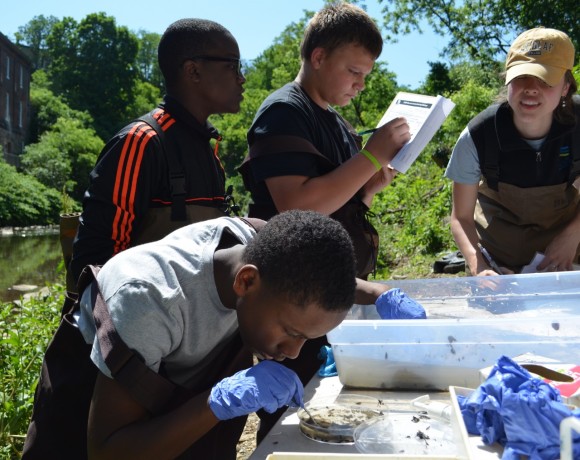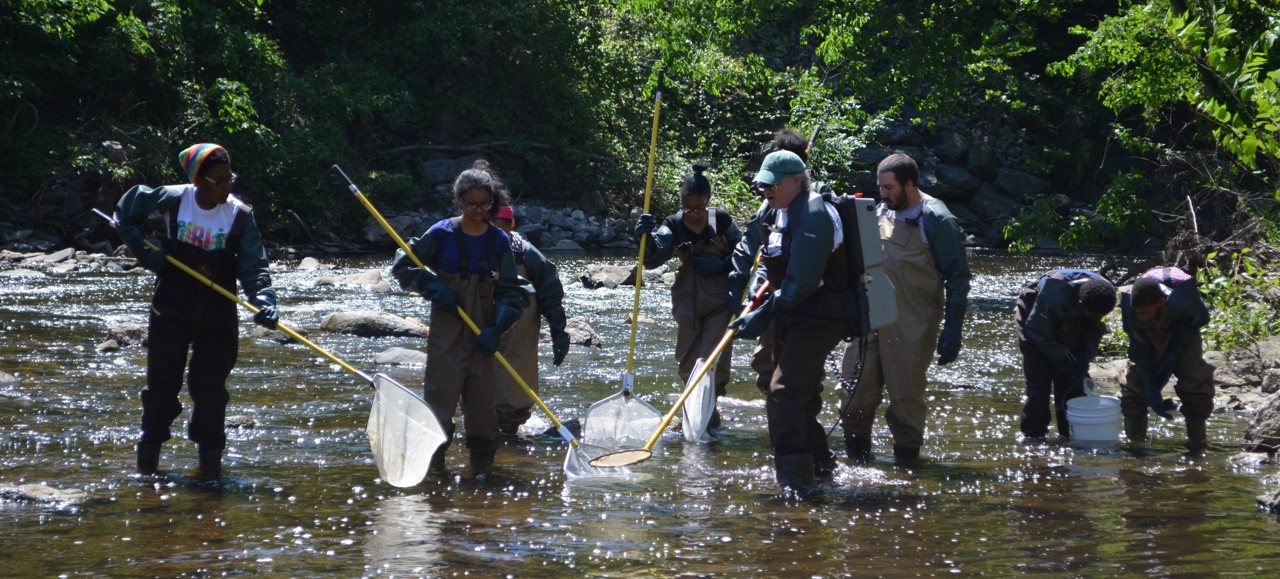Jones Falls Stream Study
It was a sunny, mild day at Mill No. 1 as a school bus with students from Independence Local l High School pulled up to the mill entrance. In the late 1800s, Mill No. 1 was the world’s largest producer of cotton, but this spring it was home to a series of stream studies designed to get local high school students out to the Lower Jones Falls, also known as the Mill Corridor.
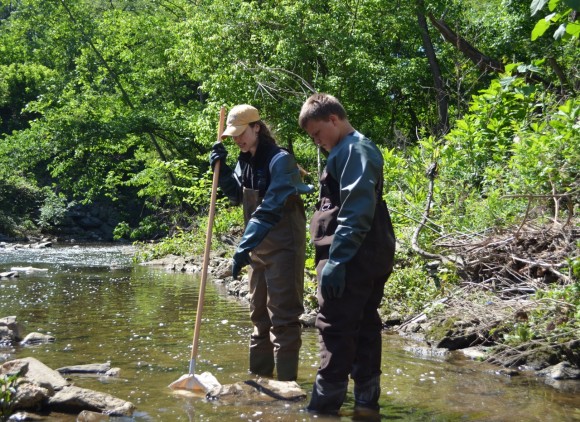
The students were briefed about site history, safety, and operating procedures before putting on waders and getting into the stream. Students worked with Dr. Kemp of the University of Baltimore to electro-fish and analyze the biodiversity of fish in the Lower Jones Falls and with Lisa DeGuire of Blue Water Baltimore to collect and identify benthic invertebrates.
Both fish and macroinvertebrates can be used as biological indicators of stream health, since some species are more sensitive to pollution than others. Through these studies we found over twelve different fish species and pollution sensitive macroinvertebrates like mayfly and dobsonfly larva. We also saw hundreds of American toad tadpoles, another highly sensitive species and a great sign for the Jones Falls.
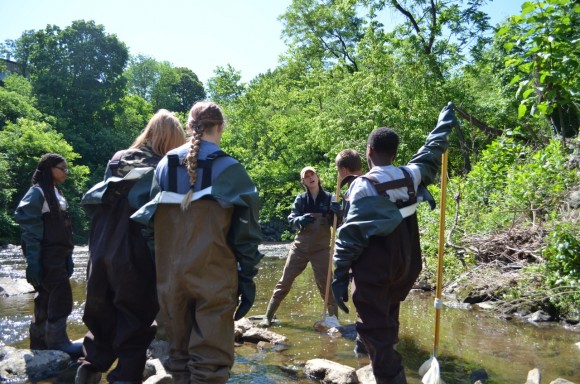
After lunch, students collected water samples with the help of Blue Water Baltimore Chris Bellmeyer to analyze for water chemistry such as nitrates, temperature, pH, phosphorus, and turbidity. Overall, the results were surprisingly positive!
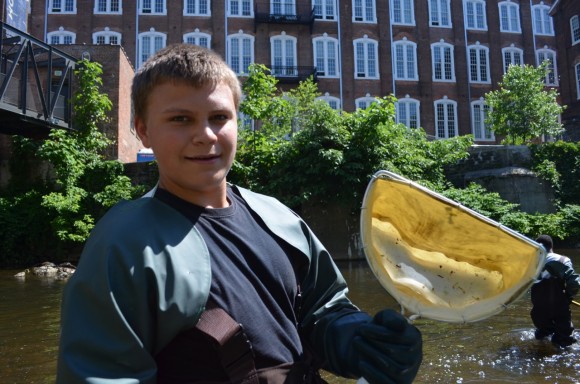
These Jones Falls stream studies were part of a larger Environmental Protection Agency program known as the Urban Waters Program. The goal of the study was not only to connect science and community within the Mill Corridor, but also study pollution sources along the Mill Corridor to determine what actions can be taken to help make the Jones Falls cleaner and safer.

The data collected from the Jones Falls stream studies, demonstrates to both local citizens and government officials that current restoration efforts are working and the Jones Falls is not a dead urban stream.

The amount of biodiversity in the area around Mill No. 1 was incredible with some species, to even Dr. Kemp’s surprise, returning to the Jones Falls where previously the conditions were too polluted to support them. For more information about the Mill Corridor stream study and the results, please visit Dr. Kemp’s blog.
